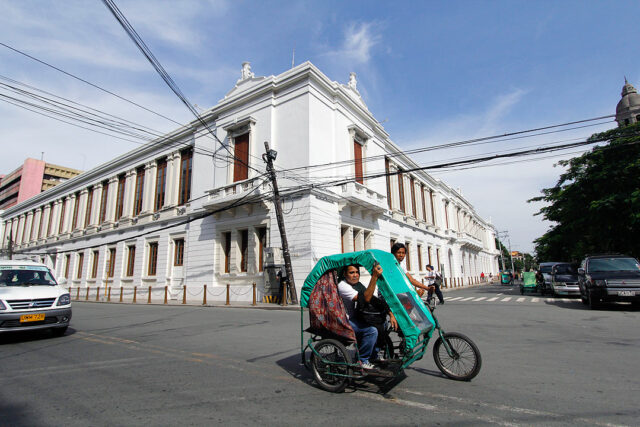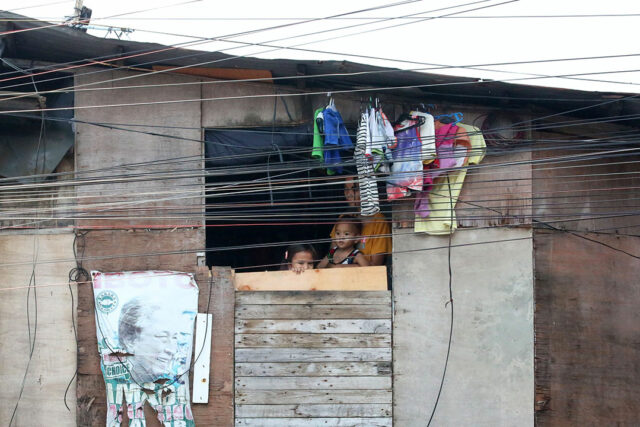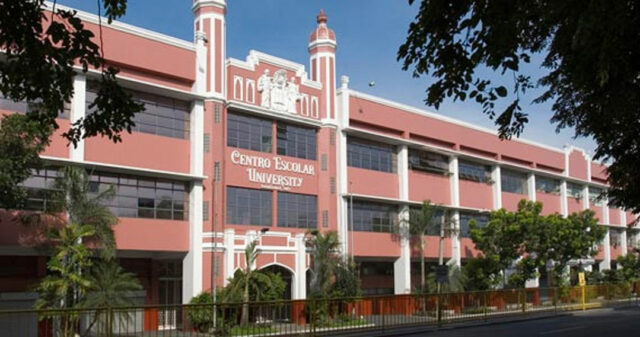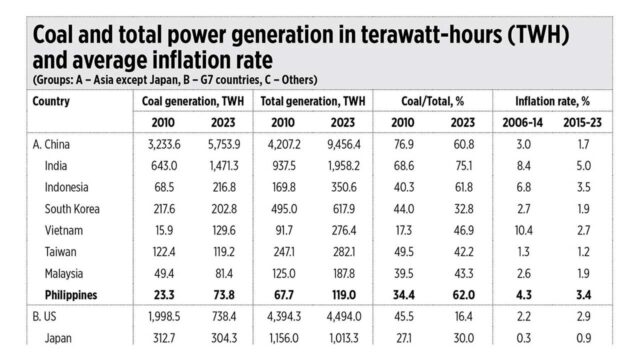With the relatively lackluster performance of the Philippine economy since the country gained independence from the United States 78 years ago, it is often said by many that Filipino culture is to blame. That the Filipinos have a “damaged” culture that tends to inhibit economic growth.
Having heard that statement every now, this led me to give more thought to the worthiness and validity of that statement.
Of course, I needed to first clearly understand what “culture” is and break it down into chewable chunks. The Merriam-Webster’s Collegiate Dictionary that I have shows several senses for the meaning of “culture.” The sense that first appeals to me is: “the customary beliefs, social forms, and material traits of a racial, religious, or social group.” But it looks somewhat broad. So, I thought of referring to another sense to make things easier to handle: “a set of shared attitudes, values, goals and practices that characterize an institution or organization.”
By combining these two senses, I will describe Filipino culture as “shared beliefs, attitudes, values, behavior, practices, and goals of the Filipino nation.” Moreover, I will describe Filipino cultural characterizations collectively as Filipino “cultural traits,” for short. I also interpret the word “shared” not to mean as shared by all Filipinos, but by most. There are always outliers within a whole.
I will limit the identification of Filipino cultural traits to those I consider as having some direct effects on economic development. However, I will also include a cultural trait that I consider as having both direct and indirect effects on economic growth.
Let me now summarize these cultural traits that I have identified.
ATTITUDES AND BEHAVIORS RESULTING FROM RELIGIOUS BELIEFS
These are attitudes and behaviors that are seen to have developed as a result of Christian religious beliefs, like the idea that “God will provide,” predestination, self-sacrifice, the Apocalypse, and similar others. These attitudes and behaviors tend to make people not do much for themselves in relation to economic challenges but instead they tend to wait for sustenance or help seemingly brought through the help and mercy of God. As a result, the economy does not flourish as it otherwise would if the people relied on themselves by working much harder and employing their own ingenuity and creativity in seeking solutions to their economic predicament.
While this inclination might have some truths in the distant past, is it still true today?
This observation has an antecedent, which was expressed by the historian Edward Gibbon in his book, The Decline and Fall of the Roman Empire, where he considered the rise of Christianity as an important cause of the decline and fall of the Roman Empire. The same may be said of the apparent slow economic development during the Middle Ages, commonly referred to before as the Dark Ages, when the influence of Christianity was at its highest point in Europe, the apparent center of world civilization at that time.
However, if such assertion is true, considering the economic development of modern Europe during the past five or so centuries, such attitudes and behaviors might have been transformed for the better over time, especially through influences of such epochal events as: the Renaissance that started in the late 15th Century; the Reformation in the 16th Century, and the consequent Counter Reformation; and the Enlightenment in the 18th Century.
Catholic Philippines, being then a part of Spain, would have been similarly influenced. In addition, the Philippines was subsequently occupied by the US for about 50 years, during which time the local population would have been influenced to some extent by America’s then predominant Protestant ethics of hard work and self-reliance.
Considering the foregoing, I would think that whatever behaviors induced earlier by religious beliefs that tended to lead to economic stagnation or slow growth have been substantially overridden in the Philippines as these had been in Europe. As such, I conclude that current Filipino religious beliefs are not a factor in hindering Philippine economic development.
‘LONG TOWEL’ PRACTICE
This cultural trait relates to the tendency of Filipinos to give financial help, solicited or unsolicited, to relatives and close friends who are in great need of such help. At the outset, this practice has a neutral economic effect as the resulting increased consumption of the receiver merely replaces the equivalent forgone consumption or saving of the provider.
Had the receiver been earning his own income to cover adequately his own consumption and therefore avoiding financial assistance from others, there would have been an incremental economic output that would have led to economic growth. This suggests, though, that the receiver had the option to get work that provides him with sufficient income to meet his own needs. However, my observations of this cultural practice indicate that the receiver cannot in fact find adequate work to provide him with enough income under prevailing circumstances. The receiver is handicapped, quite likely by lack of adequate education and training, and is not able to contribute to increasing the economic output.
‘PUWEDE NA’
This phrase, “puwede na,” is commonly heard in Filipino circles and it means not striving to produce output that bears the best quality possible. It is the opposite of “pulido” which means producing an output of the best possible quality.
I think this work attitude is prevalent among Filipino workers, especially among those not adequately supervised. Such an attitude leads to low-quality products, resulting in low demand for such products and therefore low productive output. Of course, there are business and non-business organizations that adopt a policy of producing work of the highest quality and standards, and accordingly develop adequate and effective control procedures to attain the achievement of such laudable policy. But these are the exceptions, such that the main nationwide endeavors may have been permeated by this attitude of “puwede na,” not only on the part of the workers but also on the part of the entrepreneurs themselves.
As a result, Philippine economic output may have become less competitive, especially when exported abroad. Then clearly, this prevalent attitude of “puwede na” could not lead to higher production and therefore restrains the country’s economic growth.
TARDINESS
Tardiness is a frequent topic in conversations. It is so socially prevalent that it has acquired a metonym in Philippine English: “Filipino Time” or “Philippine Time.”
For employees who are in a controlled time-keeping environment, this cultural tendency may have been suppressed. However, for other situations, especially in various types of meetings and social activities, it is prevalent. To the extent that tardiness results in the loss of productive time of one or more parties in a scheduled meeting or gathering, clearly it reduces economic output.
HIGH RISK AVERSION TO ENTREPRENEURSHIP
There is a clear low incidence of entrepreneurship among native Filipinos. This is evident in the presence, currently and in the past, of only a very few numbers of successful nationwide entrepreneurs of native Filipino ethnicity.
I attribute this condition to the high-risk aversion of native Filipinos to entrepreneurship. This risk aversion could have been handed down unwittingly by generations of native Filipino parents who predominantly encourage their children to study well in school to acquire a good job employment, but very rarely encourage them to get into business where the rewards are potentially much greater.
Many may disagree with me and argue that the reason for this condition is lack of obtainable sources of capital and not high-risk aversion. But this may not be a valid reason when one considers that most non-native first-generation startup entrepreneurs face the same conditions. Or, some may express an alternative reason. That we are not hardworking as compared to non-native entrepreneurs. I don’t think so. My own experience and observation are that native Filipinos work very hard under most conditions, but for someone else and not for themselves.
This attitude of high risk-aversion is, in my view, a significant factor in hindering economic growth.
ELECTION VOTE BUYING AND SELLING
My own observation is that vote buying and selling is universal in the Philippine archipelago. It makes one wonder why our society turns a blind eye to this prevalent practice.
Vote selling, at first sight, may appear to have an immediate, although short term, favorable economic effect. It increases the consumption of the vote sellers. However, we need to consider how the purchase money was sourced. If the purchase money came or would be recovered from public funds, the overall effect is at best neutral. The overall effect would be negative had the purchase money coming from public funds been invested in infrastructure projects and spent on education and training, which expenditures clearly provide long-term benefits.
More importantly, however, vote buying and selling may lead indirectly to significant unfavorable economic effects if those elected under this condition of coerced choice make wrong economic policy decisions, resulting in missed economic growth. And, unfortunately, this is the likely outcome of the result of such vote trading for obvious reasons.
CONCLUSION
It is clear that some Filipino cultural traits hinder economic growth. But these cultural traits are not some dark or evil attitudes and behaviors that the term “damaged culture” implies.
In my view, the ones that result in large negative economic effects are the high-risk aversion to entrepreneurship of ethnic Filipinos and the prevalent practice of vote trading.
“Puwede na” and tardiness do lead to unrecoverable lost productive opportunities. On the other hand, I consider “long towel” as more of a consequence of inadequate education and training that makes the receivers of financial assistance unable to contribute more to nationwide economic growth.
I believe that these identified cultural traits can be changed over time such that they do not hinder economic growth through intervention by a strong national leadership who is seriously dedicated to the upliftment of the general welfare. That to me, we, the citizens, must seek. n
(This article reflects the personal opinion of the author and does not reflect the official stand of the Management Association of the Philippines or MAP.)
Benjamin “Ben” R. Punongbayan is currently a member of the MAP Board of Governors. He is the founder of Punongbayan & Araullo/ P&A Grant Thornton.
map@map.org.ph
ben.punongbayan@ph.gt.com














